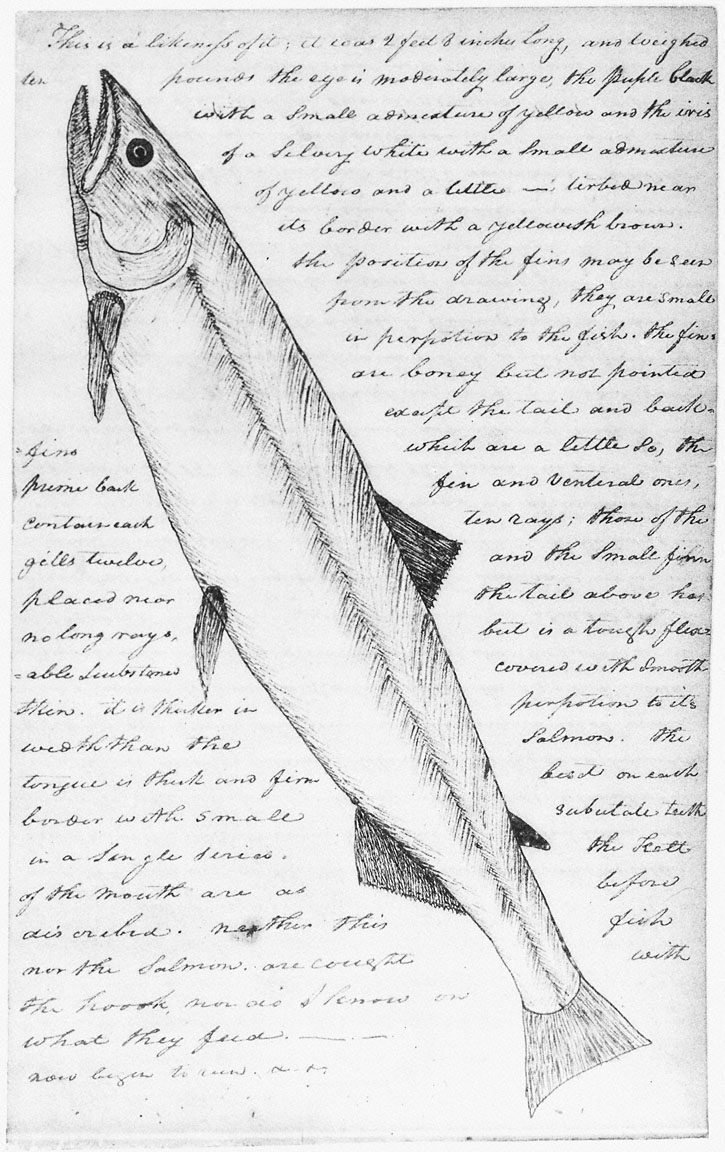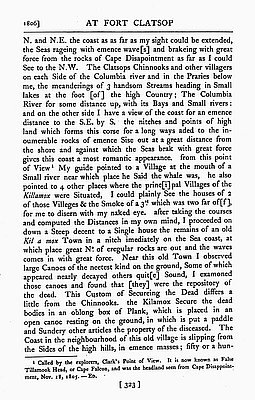This is a copy of a sketch made by William Clark in February 1806, while Expedition members were at Fort Clatsop near the mouth of the Columbia River. The drawing depicts coho salmon (Oncorhynchus kisutch), which Clark identified as a “white salmon trout.” It is one of many sketches Clark made of the plants and animals Expedition members had seen during their journey from St. Louis, Missouri, to the Pacific Ocean.
By June 1803, President Thomas Jefferson had given Meriwether Lewis lengthy written instructions on what information he was to gather on the Expedition. One of those instructions was to describe the “animals of the country generally, & especially those not known in the U.S.,” as well as other “objects worthy of notice” such as “the soil & face of the country, its growth & vegetable productions…and…mineral productions of every kind.”
Jefferson’s instructions—to observe, describe, measure, and classify natural phenomena—were a reflection of his Enlightenment ideals. The Enlightenment was an eighteenth and early nineteenth-century intellectual movement that rejected traditional religious and political dogma, emphasizing instead rationality and empirical observation in the pursuit of “useful knowledge.” During the so-called Age of Enlightenment, scientific knowledge was used to advance commerce and empire. While Lewis and Clark were charged with creating an environmental catalog of the region they traveled through, the information they gathered also served Jefferson’s interest in expanding the American republic and its territorial claims. This sketch of a coho salmon demonstrates the captains’ adherence to the mission’s scientific purpose and also addresses the potential commercial harvest of fish.
Written by Cain Allen, 2004; revised 2021
Further Reading
Ronda, James P. “‘A Knowledge of Distant Parts’: The Shaping of the Lewis and Clark Expedition.” Montana, the Magazine of Western History 41 (1991): 4–19.
Lang, William L. “Dissecting the Columbia.” Oregon Historical Quarterly 105 (Fall 2004): 354–359.


